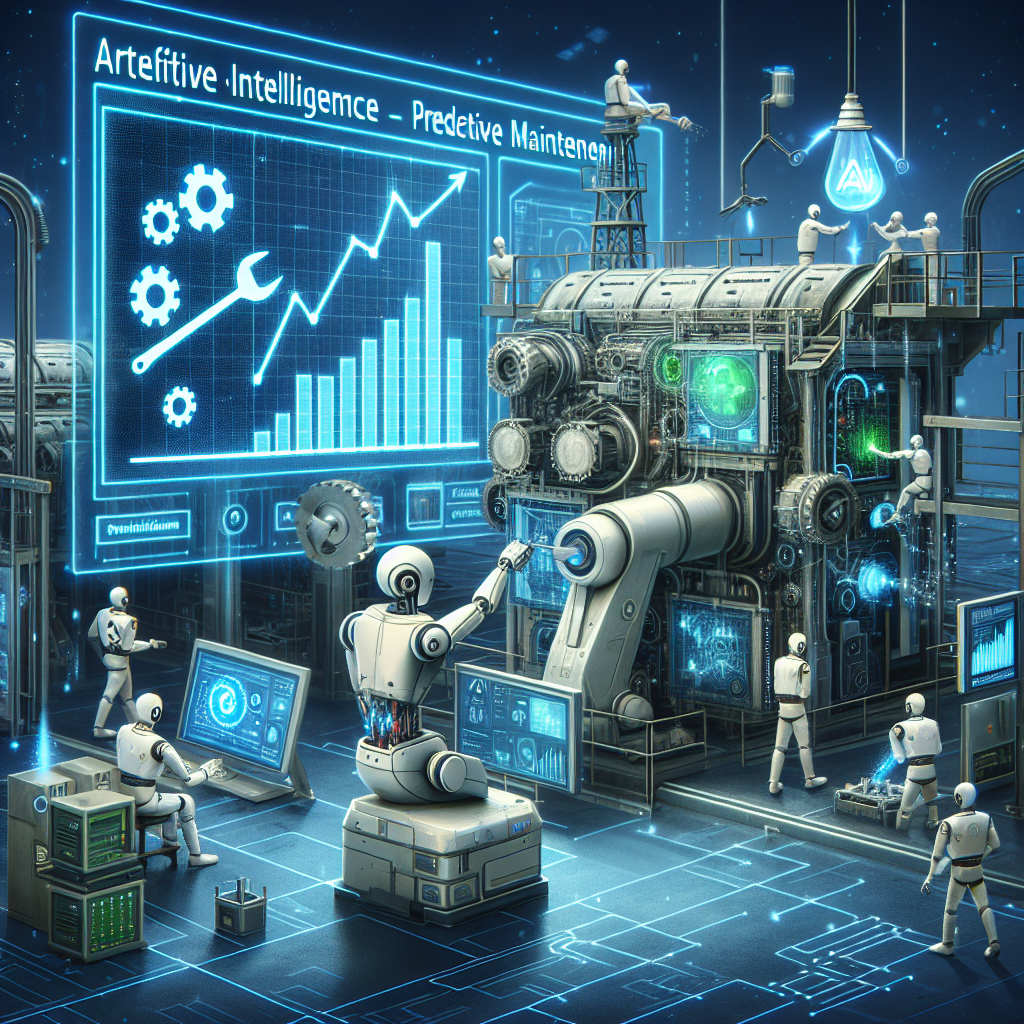In recent years, the use of Artificial Intelligence (AI) tools in predictive maintenance has become increasingly popular among industries looking to improve the efficiency and reliability of their operations. Predictive maintenance is the practice of using data and analytics to predict when equipment is likely to fail so that maintenance can be performed proactively, rather than reactively. This approach has been shown to reduce downtime, extend the lifespan of equipment, and ultimately save businesses time and money.
AI tools play a crucial role in predictive maintenance by analyzing large amounts of data collected from sensors and other sources to identify patterns and trends that may indicate potential issues with equipment. These tools can then generate alerts or recommendations for maintenance actions to be taken, allowing businesses to address problems before they escalate and cause costly disruptions.
One of the key advantages of using AI tools in predictive maintenance is their ability to process vast amounts of data quickly and accurately. Traditional methods of maintenance often rely on manual inspections or periodic checks, which can be time-consuming and prone to human error. AI tools, on the other hand, can analyze data in real-time and provide insights that would be impossible for humans to uncover on their own.
Another benefit of AI tools in predictive maintenance is their ability to learn and adapt over time. By continuously analyzing data and monitoring equipment performance, AI algorithms can improve their predictive capabilities and become more accurate in identifying potential issues. This can help businesses to optimize their maintenance schedules and reduce the risk of unexpected failures.
There are several types of AI tools that are commonly used in predictive maintenance, including machine learning algorithms, neural networks, and predictive analytics software. These tools can be customized to suit the specific needs of different industries and types of equipment, making them a flexible and versatile solution for businesses looking to improve their maintenance practices.
In addition to improving equipment reliability and reducing downtime, the use of AI tools in predictive maintenance can also help businesses to save money by optimizing their maintenance schedules and reducing the need for costly emergency repairs. By identifying issues before they escalate, businesses can plan maintenance activities more effectively and avoid unexpected disruptions to their operations.
FAQs:
Q: How can AI tools improve predictive maintenance practices?
A: AI tools can improve predictive maintenance practices by analyzing large amounts of data to identify patterns and trends that may indicate potential issues with equipment. This allows businesses to address problems before they escalate and cause costly disruptions.
Q: What types of AI tools are commonly used in predictive maintenance?
A: Common types of AI tools used in predictive maintenance include machine learning algorithms, neural networks, and predictive analytics software. These tools can be customized to suit the specific needs of different industries and types of equipment.
Q: How can businesses benefit from using AI tools in predictive maintenance?
A: Businesses can benefit from using AI tools in predictive maintenance by improving equipment reliability, reducing downtime, and saving money on maintenance costs. AI tools can help businesses to optimize their maintenance schedules and reduce the risk of unexpected failures.
Q: Are AI tools in predictive maintenance suitable for all types of industries?
A: AI tools in predictive maintenance can be customized to suit the specific needs of different industries and types of equipment. While some industries may benefit more from using AI tools in predictive maintenance than others, these tools can be adapted to a wide range of applications.
Q: What are the limitations of using AI tools in predictive maintenance?
A: While AI tools can be highly effective in improving predictive maintenance practices, they are not without their limitations. For example, AI tools may require large amounts of data to function effectively, and they may also be subject to biases or errors in the data used to train them. It is important for businesses to carefully evaluate the capabilities and limitations of AI tools before implementing them in their maintenance practices.

